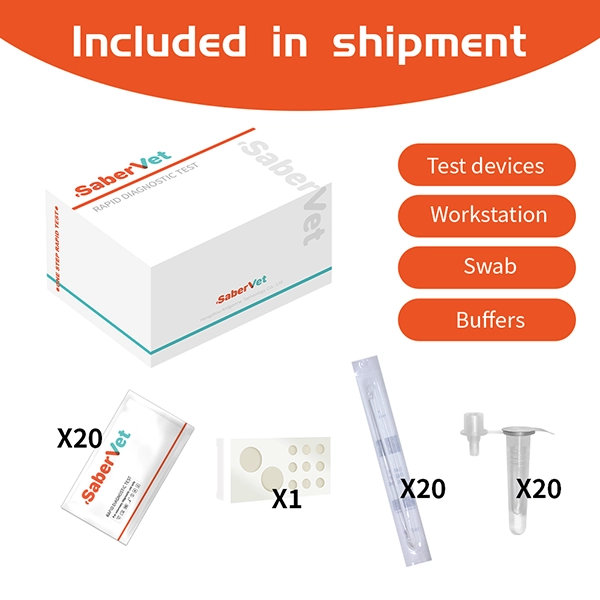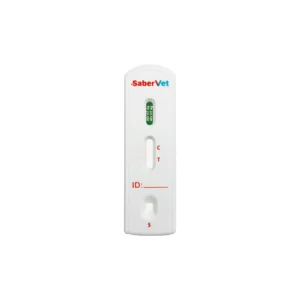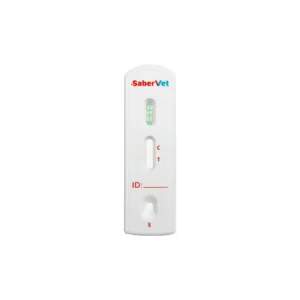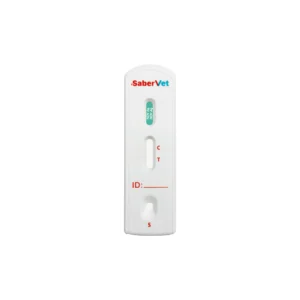Description
Introduction to Pathology
Transmission and Infection
Avian Influenza Virus (AIV) belongs to the Orthomyxoviridae family of influenza A viruses. Depending on their surface antigens Hemagglutinin (HA) and Neuraminidase (NA), AIV viruses are classified into several subtypes, of which the H5 and H7 subtypes of highly pathogenic avian influenza (HPAI) are a major threat to avian and human health.
Pathologic process
Highly pathogenic avian influenza (HPAI): commonly found in the H5 and H7 subtypes, the infection manifests itself as a severe systemic disease with acute onset and high mortality. Pathologic changes include:
Acute systemic infection: rapid spread of the virus throughout the body, affecting multiple organs and systems.
Tissue lesions: hemorrhage, necrosis, and inflammation, especially in the respiratory and digestive tracts and the nervous system.
Immune response: intense inflammatory response and cytokine storm.
Low Pathogenic Avian Influenza (LPAI): common in other subtypes, symptoms are mild and usually limited to the respiratory and digestive tracts.
Clinical signs
Poultry:
HPAI: acute death, respiratory distress, decreased egg production, swelling, hemorrhage (infarct spots), diarrhea, neurological signs (e.g., tremors, ataxia).
LPAI: mild respiratory symptoms, decreased appetite, decreased egg laying, mild diarrhea.
Wildfowl: symptoms are diverse, and some wildfowl can be carriers of the virus without apparent symptoms.
Means of detection
Clinical diagnosis
Clinical symptoms and pathologic changes can suggest avian influenza infection, but laboratory tests are needed to confirm the diagnosis.
Laboratory tests
Antigen detection
Rapid Immunochromatographic Test Strips (RITS): detect avian influenza virus antigens using immunochromatographic techniques.
Enzyme-linked immunosorbent assay (ELISA): Detects avian influenza virus antigen or antibody in samples with high sensitivity and specificity, suitable for laboratory testing.
Immunofluorescence assay (IFA): used to detect the presence of viral antigens in cells or tissues.
Molecular detection
Reverse transcription PCR (RT-PCR): by detecting avian influenza virus RNA in samples, it is the most commonly used and highly sensitive and specific assay for various sample types (e.g., swabs, tissues, blood).
Quantitative PCR (qPCR): Used to quantify viral RNA to help assess viral load and degree of infection.
Virus isolation and culture
Viruses are isolated from collected samples, cultured and identified. This method, although accurate, is time-consuming and requires specialized laboratory equipment.
Treatment Options
Currently, the treatment of avian influenza focuses on outbreak control and symptomatic treatment, as described below:
Epidemic control
Isolation and culling:
Isolate infected flocks to prevent the spread of the virus.
For highly pathogenic avian influenza-infected flocks, culling measures are usually taken to control the spread of the epidemic.
Disinfection and hygiene management:
Strictly disinfect poultry houses, utensils, and transportation tools.
Strengthen feeding management, reduce stress factors, and maintain environmental hygiene.
Vaccination:
In some areas, vaccinate poultry against avian influenza to prevent infection and spread of the virus.
Symptomatic treatment.
For infected poultry, especially during influenza outbreaks, treatment is mainly symptomatic supportive therapy to improve survival rates:
Antiviral drugs:
Neuraminidase inhibitors (e.g., oseltamivir) are available for treatment in the case of human and some pet bird infections, but have limited application in large-scale poultry production.
Supportive therapy:
Provide nutritional support, maintain hydration, and control secondary infections (e.g., use broad-spectrum antibiotics to prevent bacterial infections).
Use anti-inflammatory medications to reduce the inflammatory response.
Preventive Measures
Biosecurity Measures:
Strictly control access to personnel and equipment to reduce foreign sources of infection.
Isolate newly introduced birds for observation and confirm that they are disease-free before mixing them into existing groups.
Regular monitoring and testing:
Conduct regular health monitoring and virus testing of poultry flocks to detect and control outbreaks promptly.
Good feeding management:
Provide suitable environment and nutrition, reduce stress factors, and improve the immunity of birds.
Summarize
Avian influenza virus is a pathogen that poses a serious threat to avian and human health, and early diagnosis and effective control of outbreaks is the key to preventing the spread of the virus. Avian influenza viruses can be accurately detected through a variety of means, including antigen detection, molecular testing, and virus isolation so that effective control and treatment measures can be taken. An integrated prevention and control strategy, including biosecurity measures, vaccination, and regular surveillance, can help prevent and control outbreaks of avian influenza.
The ITGEN Pet Rapid Test Kit, the pioneer in animal diagnostics. Our innovative technology and rapid diagnostic products create accurate and timely health protection for your pet's health.








